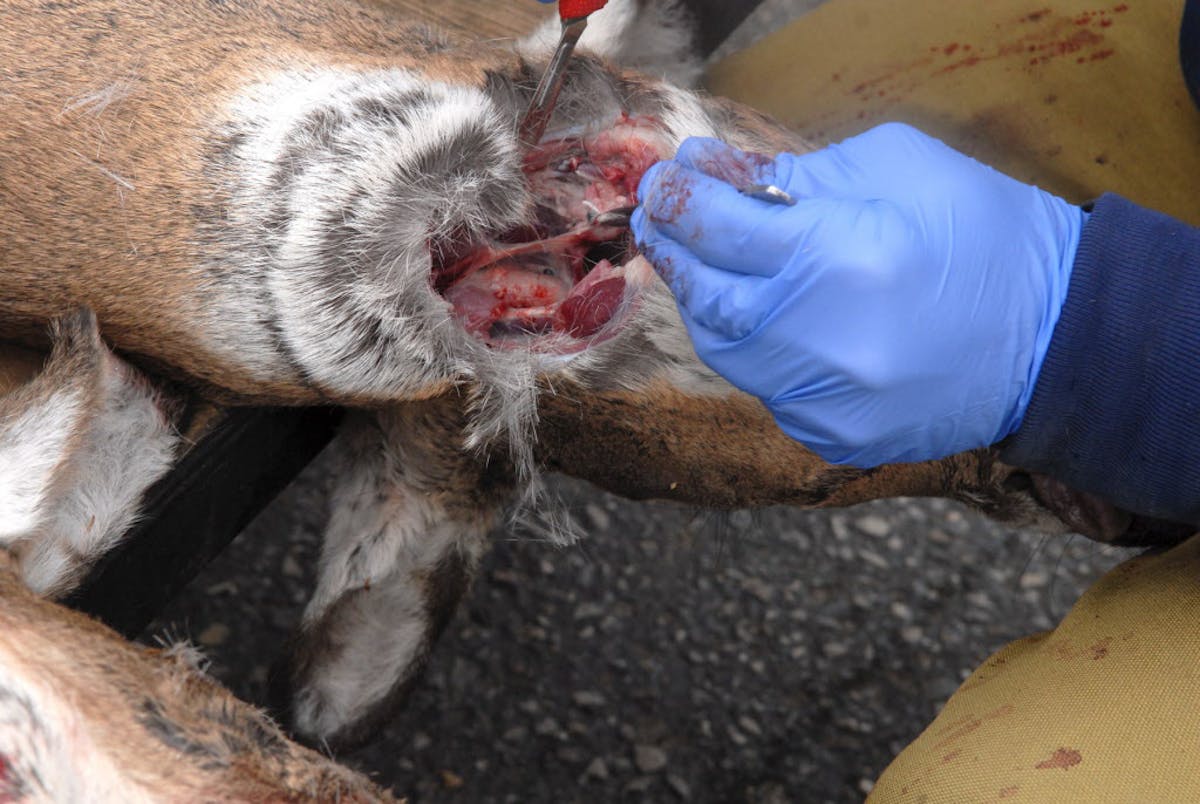A coalition to protect the BWCA that finally includes hunters and anglers, Minnesota's battles against Chronic Wasting Disease and invasive species, the state's first deer management plan ever and the latest walleye drama from Mille Lacs make up a diverse slate of outdoors stories that bear watching in 2017.
New friends of the BWCA
Last year at this time, a new group called Sportsmen for the Boundary Waters had mustered only 150 signatures for a petition to permanently place the BWCA's watershed off limits to copper-nickel mining. Now the group's petition, with momentum from the federal government's recent refusal to renew two critical mineral leases in northern Minnesota, carries 7,500 signatures.
Outreach Coordinator Piper Hawkins-Donlin, who works closely with Backcountry Hunters & Anglers, said growing support for the BWCA mining ban will be critical in the first year of the Trump White House. And coupled with written support from a strong list of outdoors groups and businesses (National Wildlife Federation, Rapala, Izaak Walton League, Pope and Young Club, Patagonia Inc. and many more), rank-and-file hunters and anglers could be building a coalition with environmentalists and conservationists that has become uncommon in Minnesota.
"We're bridging that gap for the first time in a long time,'' Hawkins-Donlin said.
Never say die
While Wisconsin and Iowa have conceded to the spread of Chronic Wasting Disease (CWD) in deer, Minnesota continues to fight it. A special hunt in Fillmore County began Dec. 31 to drastically thin the local whitetail population around Lanesboro.
The fatal brain disease is contagious among deer, elk and moose and the Minnesota Department of Natural Resources's (DNR) strategy in the area is to reduce deer contact to stop CWD from spreading. So far, CWD has been detected in three antlered bucks within a 10-mile radius of a point west of Lanesboro.
The positive test results came from strategic DNR surveillance. The agency has since banned deer feeding in five surrounding counties to bolster the fight. The campaign to keep CWD out of Minnesota could widen to Crow Wing County this fall with more surveillance. That's where CWD recently was found in two farmed deer.
Mille Lacs again
For the past two years, open-water walleye fishing on Mille Lacs has been shut down early. Even last year. when it was illegal to keep a single fish, walleye fishing was halted to protect the fishery from catch-and-release hooking mortality. Anglers, resort owners, politicians, Mille Lacs tribal members and the local chamber of commerce are watching again as co-management of the lake evolves between the state and eight Chippewa bands.
This year's private walleye meetings not only will shape the 2017 Mille Lacs fishing season, but they could have implications for other natural resource issues shared by the state and Chippewa. That's because Gov. Mark Dayton drove a wedge into the relationship last year by purposely surpassing the state's walleye quota. His decision stoked anger and distrust from the bands.
The book on deer
Minnesota's first statewide deer management plan will be formulated this year by the DNR and a 20-member citizens' advisory committee. The DNR-chosen committee will meet in public throughout 2017 with hopes of implementing a plan by early 2018. It will include a statewide harvest objective with considerations that go beyond hunting.
But for hunters, important issues will include how to boost deer populations in northern forests; how to price deer licenses; what data should the DNR share with the public; how should the DNR strengthen two-way communication with hunters; how and where can the state acquire public land; what should the state do about deer diseases and how will the DNR address local variation in hunting goals.
War on invasives
Ever heard of a quagga mussel? It arrived in the Great Lakes region more recently than the zebra mussel and it hasn't yet gained traction in Minnesota lakes. But like the zebra mussel, a lake-changing mollusk infesting more and more fishing waters, it's getting attention at the state's largest invasive species research center at the University of Minnesota.
Minnesota's natural resources are under attack from an increasing array of aquatic and terrestrial plants and animals that aren't native to the state and cause harm. In 2017, the fight against the spiny water flea, starry stonewort (a grasslike algae), Eurasian milfoil, emerald ash borer and many other invaders will be waged by the DNR, the U of M, the Department of Agriculture, regional soil and water conservation districts, county land managers and many others. In many cases, lakeshore and woodland property owners, hunters, anglers and trappers are the most affected.
Analysis: Scottie Scheffler comparisons with Tiger Woods is a tribute to both
Federal appeals court overturns West Virginia transgender sports ban

Official who helped MSHSL on pioneering ventures dies at 89

Twins demoting strikeout-prone Wallner to St. Paul

